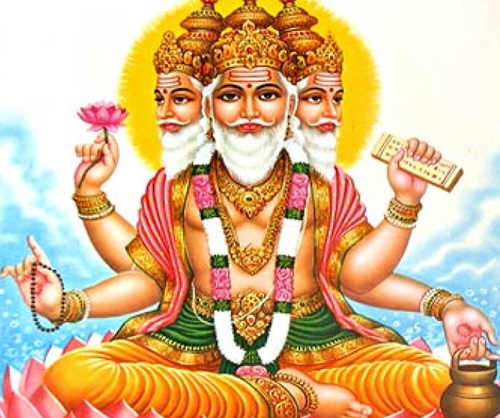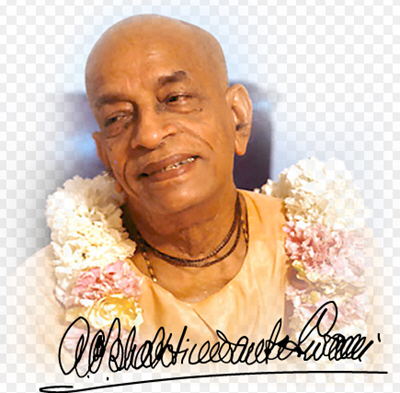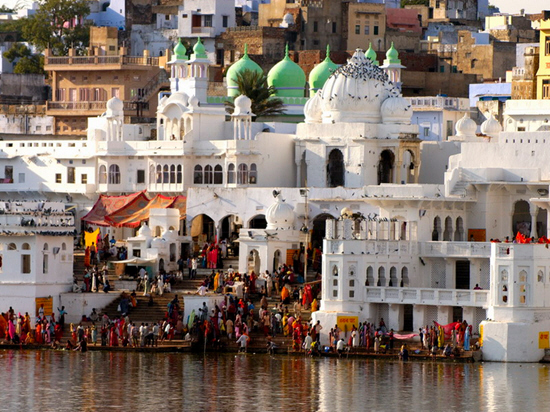
When Sri Caitanya Mahaprabhu toured South India about five hundred years ago, He discovered the Brahma-samhita, a spiritual treatise by Lord Brahma. Lord Caitanya was greatly pleased to find this work, because it clearly sets forth Lord Brahma’s realization of the supreme position of Lord Krsna. Here are some verses from the fifth chapter of the Brahma-samhita:
TEXT 39
ramadi-murtisu kala-niyamena tisthan
nanavataram akarod bhuvanesu kintu
krsnah svayam samabhavat paramah puman yo
govindam adi-purusam tam aham bhajami
I worship Govinda, the primeval Lord, who by His various plenary portions appeared in the world in different forms and incarnations such as Lord Rama, but who personally appears in His supreme original form as Lord Krsna.
TEXT 44
srsti-sthiti-pralaya-sadhana-saktir eka
chayeva yasya bhuvanani bibharti durga
icchanurupam api yasya ca cestate sa
govindam adi-purusam tam aham bhajami
The mighty Durga, who creates, maintains, and annihilates the material worlds, is the potency of the Supreme Lord, and she moves like His shadow, according to His desire.
TEXT 45
ksiram yatha dadhi vikara-visesa-yogat
sanjayate na hi tatah prthag asti hetoh
yah sambhutam api tatha samupaiti karyad
govindam adi-purusam tam aham bhajami
Milk changes into yogurt when mixed with a yogurt culture, but actually yogurt is constitutionally nothing but milk. Similarly, Govinda, the Supreme Personality of Godhead, assumes the form of Lord Siva for the special purpose of material transactions. I offer my obeisances at Lord Govinda’s lotus feet.
TEXT 48
yasyaika-nisvasita-kalam athavalambya
jivanti loma-vilaja jagad-anda-nathah
visnur mahan sa iha yasya kala-viseso
govindam adi-purusam tam aham bhajami
The Brahmas and other lords of the mundane worlds appear from the pores of Maha-Visnu and remain alive for the duration of His one exhalation. I adore the primeval Lord, Govinda, of whom Maha-Visnu is a portion of a plenary portion.
TEXT 49
bhasvan yathasma-sakalesu nijesu tejah
sviyam kiyat prakatayaty api tadvad atra
brahma ya esa jagad-anda-vidhana-karta
govindam adi-purusam tam aham bhajami
The sun manifests his brilliance in a gem, although it is stone. Similarly, the original Personality of Godhead, Govinda, manifests His special power in a pious living entity. Thus the living entity becomes Brahma and manages the affairs of the universe. Let me worship Govinda, the original Personality of Godhead.
TEXT 50
yat-pada-pallava-yugam vinidhaya kumbha-
dvandve pranama-samaye sa ganadhirajah
vighnan vihantum alam asya jagat-trayasya
govindam adi-purusam tam aham bhajami
I worship the primeval Lord, Govinda. Ganesa always holds His lotus feet upon the pair of tumuli protruding from his elephant head in order to obtain power for his function of destroying all obstacles on the path of progress in the three worlds.

